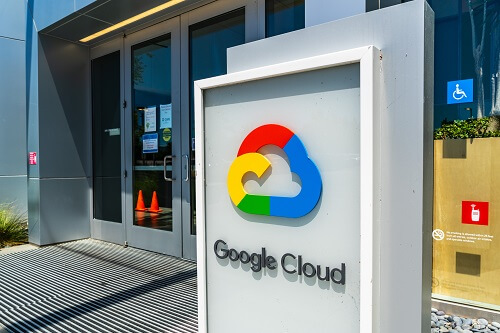
- GCUL enters private testnet, targeting a commercial launch in 2026.
- Python-based smart contracts to enhance accessibility for developers.
- Google-CME collaboration tests round-the-clock settlement for payments and collateral.
Google Cloud has made its entry into blockchain infrastructure with the Google Cloud Universal Ledger (GCUL), which began a private testnet phase in late August 2025.
This initiative positions Google as a rising competitor in the institutional blockchain sphere, delivering neutral, high-performance distributed ledger technology tailored for financial entities and payment providers.
GCUL’s support for Python-based smart contracts increases accessibility for developers, allowing for intricate on-chain programmable logic.
Implications for Financial Services and Blockchain Adoption
Designed as a neutral infrastructure, Google’s GCUL confronts a significant issue in current blockchain ecosystems, where financial organizations often hesitate to build on networks dominated by competitors.
For example, stablecoin issuers like Tether commonly steer clear of blockchains developed by competitors such as Circle, while payment providers like Adyen remain cautious of adopting Stripe’s blockchain solutions.
By ensuring neutrality, GCUL could promote wider institutional adoption, allowing any financial institution to create blockchain applications without competitive reservations.
The Google-CME Group partnership, publicly revealed in March 2025, supports GCUL’s initial development and testing.
Field integration and testing by CME Group are focused on utilizing blockchain for 24/7 settlement of collateral, margins, and fees, aiming to reduce costs and enhance liquidity.
Complete testing with market participants and a commercial service rollout is anticipated in 2026.
Google’s blockchain addresses the increasing demand for stablecoin transactions and expedited payment solutions.
A study cited by Google indicates that stablecoin volumes tripled in 2024, reaching $5 trillion in organic transactions, while total volumes surged to $30 trillion globally.
The report pointed out that fragmented payment systems continue to incur high costs and inefficiencies in cross-border trade, with projected global GDP losses of $2.8 trillion by 2030.
GCUL aims to address these challenges by offering a transparent, low-latency transactional framework.
Insights on GCUL’s Technology and Market Standing
From a technical perspective, GCUL is equipped with Python-based smart contracts, aligning with flexible and widely embraced programming standards.
The platform is engineered not only for streamlining payments but also as an infrastructure hub for capital markets, facilitating native commercial bank money on-chain and supporting agentic payment functionalities.
Google intends to integrate GCUL across its expansive cloud ecosystem, providing access to a broad network of institutional partners and developers.
In contrast to other emerging Layer-1 blockchain initiatives, such as Stripe’s Tempo and Circle’s Arc, Google positions GCUL as a neutral entity within financial infrastructure.
While Stripe’s blockchain prioritizes performance in payment apps and Ethereum compatibility, and Circle’s platform emphasizes stablecoin transactions, foreign exchanges, and capital markets applications, GCUL is crafted as a more open, less vertically integrated Layer-1 solution, fostering interoperability among competing institutions.


